In honor of this week's preparedness item--flour--I'm going to show you how to make one of my family's favorite foods, Braided Herb Bread. It's a lovely white bread chock full of savory herbs. I think it's especially good with soup or a hearty salad. If you are already thinking that you could never make anything like this, you are wrong. I started making this before I'd ever successfully made a regular loaf of bread. As long as you have good yeast you should be fine. This bread is very forgiving.
Braided Herb Bread takes about 3-3 1/2 hours from start to finish, but most of the time is for rising and baking. I like to make the dough in my bread machine because it's so simple. But you can just as easily make it in a mixer. Or by hand if you're a total Luddite.
(see that writing on the side of my bread machine pan? When I find a recipe that I love and make all the time, I write it on the side with a sharpie, that way I don't have to get out my cookbook. That is just way too much work. I have recipes on all four sides of this pan.)
You will then roll each of these sections into a long, thin snakey-looking shape about 20-24 inches long (14-18" if you're making two smaller loaves). You can roll it out any way that catches your fancy, just don't try to pull it that long; it will rip. Once you've made snakes out of all three sections of dough, pinch the ends together tightly on one side only.
Now we're going to braid your bread! This will feel so blissfully domestic your head will almost explode. Feel free to call everyone around to admire your handiwork. (Remember to pinch the other end of your braid when you've finished!)
At this point you will pick up one end and gently tie the braid in a knot around itself, tucking the ugly ends underneath. This sounds complicated but it's not. Promise.
Gorgeous! Now you'll put your loaf on a cookie sheet and let it rise in a warm place until the dough has almost doubled in size (about 30-45 minutes depending on how warm the yeast is). Preheat your over to 350º and move the shelves around so there is plenty of room for your bread to grow. This sucker is going to get pretty big.)
Bake the bread for about 30-40 minutes until it's done. But how are you supposed to know when it's done exactly? Some people suggest turning the loaf over and tapping it to see if it sounds hollow. But who wants to touch 350º bread? Plus I don't think bread really sounds all that hollow. Here is the way to tell if your bread is done: Get out your thermometer again. Bread is perfect when it's 190º. Stick the thermometer into the middle of the loaf after 30 minutes and see what it says.
Remove your bread from the oven and slide it onto a cooling rack. Get a chilly stick of butter out of the fridge and unwrap it a bit. Rub the butter all over the loaf so it's nice and shiny. I serve my Braided Herb Bread on a platter wrapped in a clean tea towel. Since it's got such a lovely taste (and since you just rubbed butter all over the outside), it doesn't really need to be served with butter. I just let everybody tear off a piece and pretend we're French peasants. This bread definitely looks amazing, but it also tastes amazing. People will love you for this!
Happy baking!
The ingredients:
1 egg, beaten
3/4 cup milk
1/2 cup water
1/4 cup butter (cut into 4 pieces)
4-4 1/2 cups flour
3 Tbs. sugar
1 1/2 tsp salt
1 1/2 tsp. dried marjoram
3/4 tsp. dried thyme
3/4 tsp. rosemary crushed (You can pinch it a bunch of times in your hand. Close enough.)
3/4 tsp. dried dill
2 packs yeast (or 4 1/2 tsp if you have bulk yeast. I prefer instant or quick rise.) Respect the expiration date. If the date has passed, throw it out. Trust me.
(If you don't have all of these spices just omit whatever.)
In a microwave-safe medium-sized bowl, beat an egg. Add milk, water and butter.
Microwave on HIGH for about a minute and a half until the mixture is 120º-130º. One of my best friends in the kitchen is a thermometer. I like the ones with the long cable because they are easier to read than ones that have the readout on the thermometer itself. If you're going to buy one, make sure it goes up to 375º or so. That way you can use it for frying as well. I bought a kitchen thermometer once without realizing that it was specifically for meat and it only had readouts up to 225º. Bummer. This one by Polder is wonderful. It's about $20. You need it.
Pour the milk mixture into your breadmaker (or your mixing bowl if you're using a mixer instead). Then add the rest of the ingredients in the order listed. I like to add about 4 1/4 cups of flour unless it's a really humid day. Then I'll add 4 1/2. (If you're using a mixer, mix all the dry ingredients together first. If you are using a mixer AND regular old yeast, put the yeast in the bowl with the milk mixture. Let it sit for about 10 minutes or so. This is called proofing. It's a drag and you don't have to do it if you use Instant or Rapid-rise yeast. Now you know. Carry on with the rest of the recipe.)
(see that writing on the side of my bread machine pan? When I find a recipe that I love and make all the time, I write it on the side with a sharpie, that way I don't have to get out my cookbook. That is just way too much work. I have recipes on all four sides of this pan.)
Set your bread maker on the dough setting (or whatever setting that will mix the dough and let it rise without baking it.) If you are using a mixer, knead the dough for about 8 minutes, then let it rise til it's doubled in size. It will still be kind of lumpy and jaggedy. That's quite all right.
Now you'll take the dough and turn it out onto a floured surface. If it's sticky add some more flour. You'll knead it for a minute or so, then divide it into three equal sections (this makes a big ol' loaf of bread, so if your family is on the smaller side you might want to make two smaller loaves and give one to a neighbor. They will love you! If that's the case, divide the dough into six equal pieces--three for each loaf-- and carry on just the same. Bake the smaller loaves on the same cookie sheet, but for about 6-10 minutes less.)
You will then roll each of these sections into a long, thin snakey-looking shape about 20-24 inches long (14-18" if you're making two smaller loaves). You can roll it out any way that catches your fancy, just don't try to pull it that long; it will rip. Once you've made snakes out of all three sections of dough, pinch the ends together tightly on one side only.
Now we're going to braid your bread! This will feel so blissfully domestic your head will almost explode. Feel free to call everyone around to admire your handiwork. (Remember to pinch the other end of your braid when you've finished!)
At this point you will pick up one end and gently tie the braid in a knot around itself, tucking the ugly ends underneath. This sounds complicated but it's not. Promise.
Gorgeous! Now you'll put your loaf on a cookie sheet and let it rise in a warm place until the dough has almost doubled in size (about 30-45 minutes depending on how warm the yeast is). Preheat your over to 350º and move the shelves around so there is plenty of room for your bread to grow. This sucker is going to get pretty big.)
Here is a nifty trick I use all the time when baking bread. Loaves tend to get quite brown on top by the time they've cooked all the way through. I hate really brown bread. It's ugly and it's usually really hard. So I bake my bread with a paper towel over the top. It allows the bread to brown, but not excessively. It will not burst into flames (unless you touch it against the heating element but I've only done that once in my whole life).
Bake the bread for about 30-40 minutes until it's done. But how are you supposed to know when it's done exactly? Some people suggest turning the loaf over and tapping it to see if it sounds hollow. But who wants to touch 350º bread? Plus I don't think bread really sounds all that hollow. Here is the way to tell if your bread is done: Get out your thermometer again. Bread is perfect when it's 190º. Stick the thermometer into the middle of the loaf after 30 minutes and see what it says.
Remove your bread from the oven and slide it onto a cooling rack. Get a chilly stick of butter out of the fridge and unwrap it a bit. Rub the butter all over the loaf so it's nice and shiny. I serve my Braided Herb Bread on a platter wrapped in a clean tea towel. Since it's got such a lovely taste (and since you just rubbed butter all over the outside), it doesn't really need to be served with butter. I just let everybody tear off a piece and pretend we're French peasants. This bread definitely looks amazing, but it also tastes amazing. People will love you for this!
Happy baking!
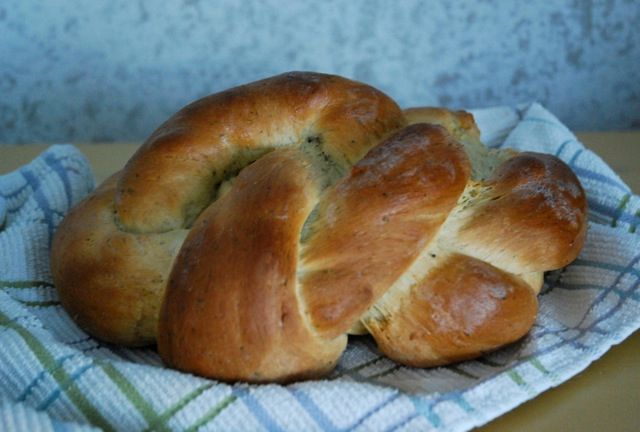
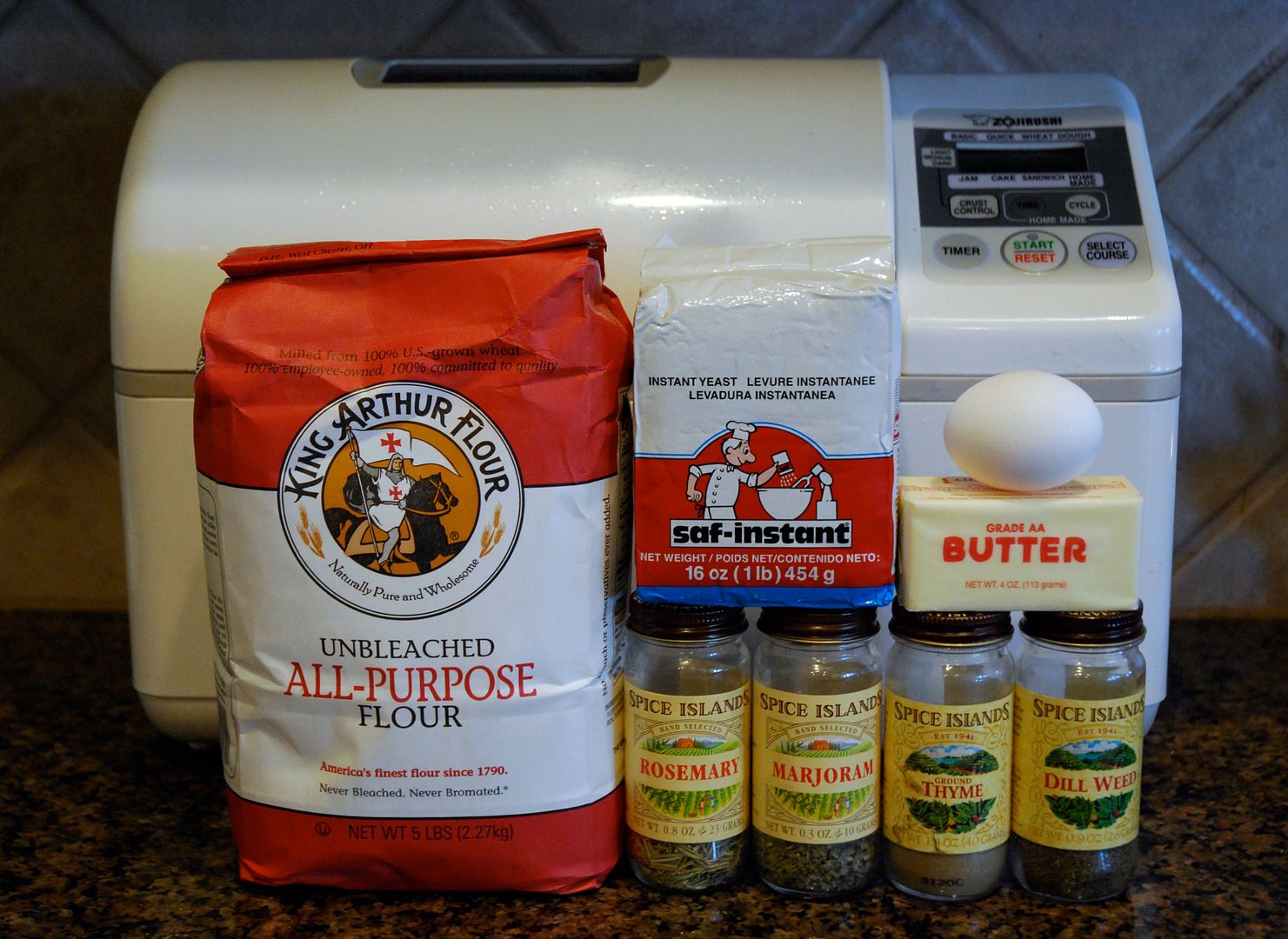
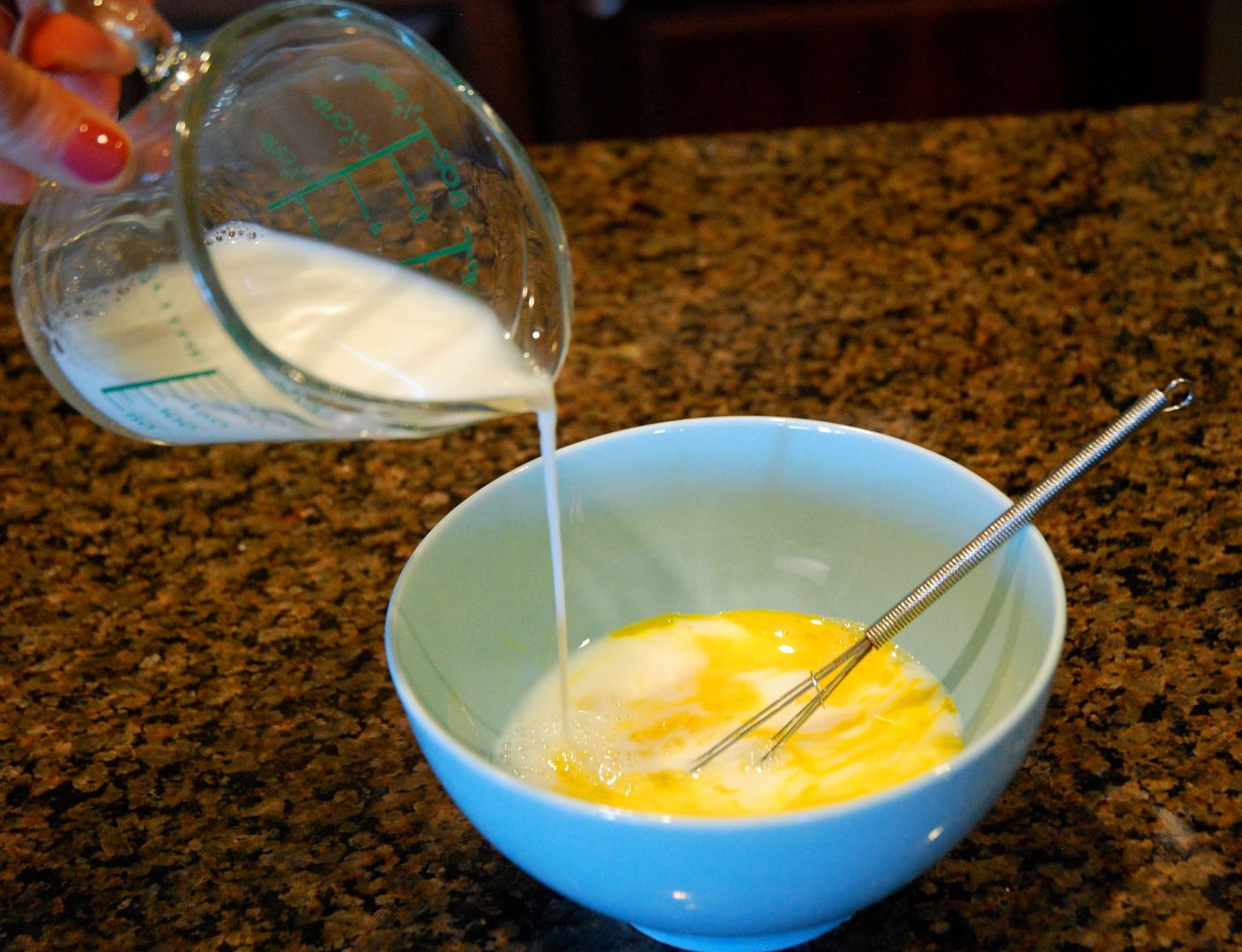
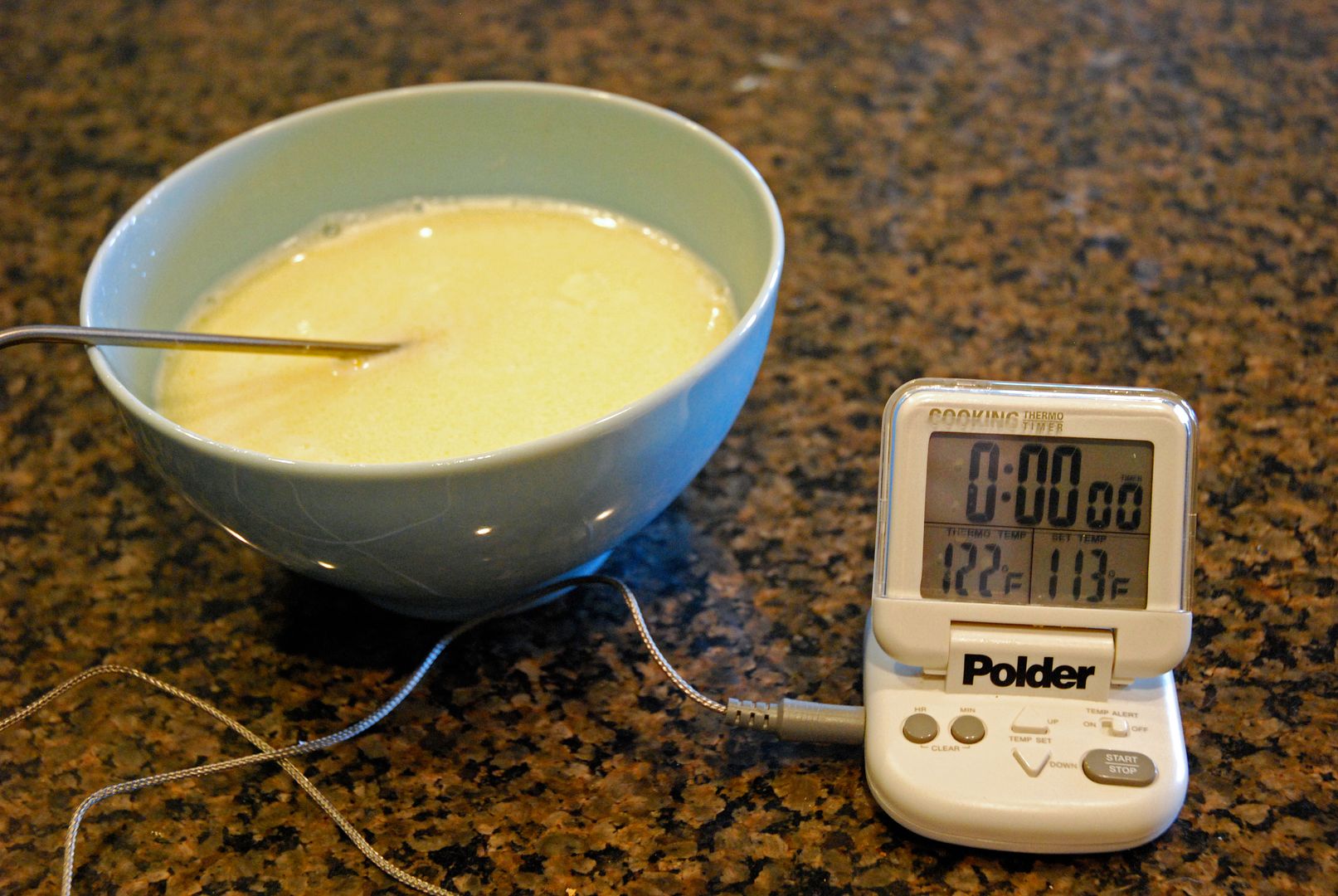



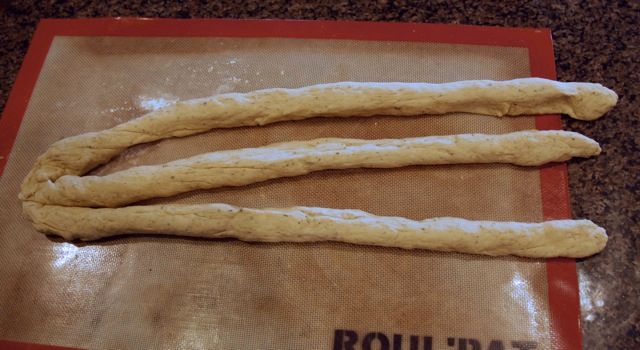

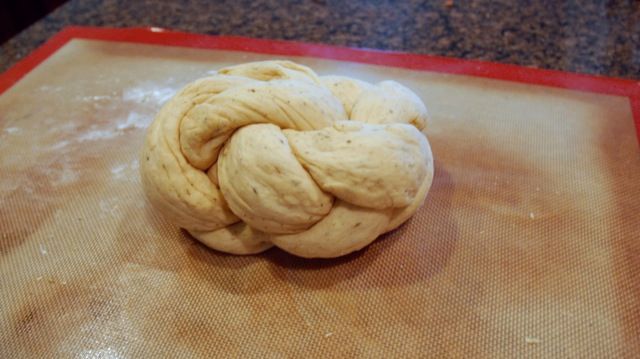
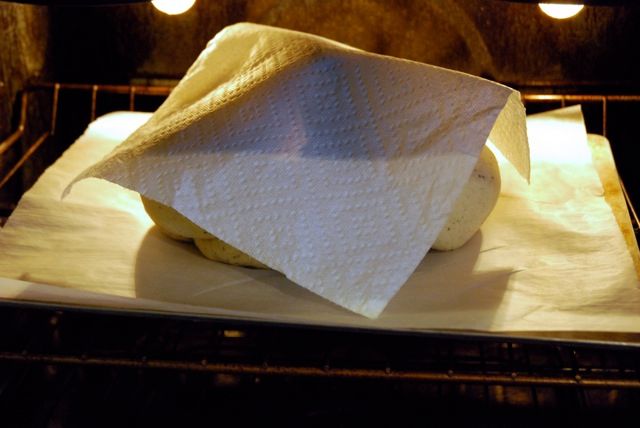

I can't wait to try this. And I love the idea of writing the recipe on the pan.
ReplyDeleteWhat an excellent show and tell instruction procedure. You are an arTISTE! It must have taken all day to photograph this thing, and we are duly grateful. I think I'll try it with white whole wheat flour with a little gluten. Manufique!
ReplyDeleteJennie,
ReplyDeleteNow that is a bee-utiful loaf of bread! I am so happy I found your post! I am learning to make great bread this year. And hopefully bread that does not take a whole lot of kneading! YOur's is perfect!!!!
I will love to make this for Sunday. We are having guest for a crab bisque luncheon and this gorgeous bread will be impressive and delicious!
Thanks,
Yvonnne
Wow, Jennie, you've been busy! I love your bread post and all the photos and instructions. I'll have to try it out. It looks and sounds wonderful.
ReplyDelete